The Article
ST-50 From DS Audio: One Sticky Situation
27th November 2018
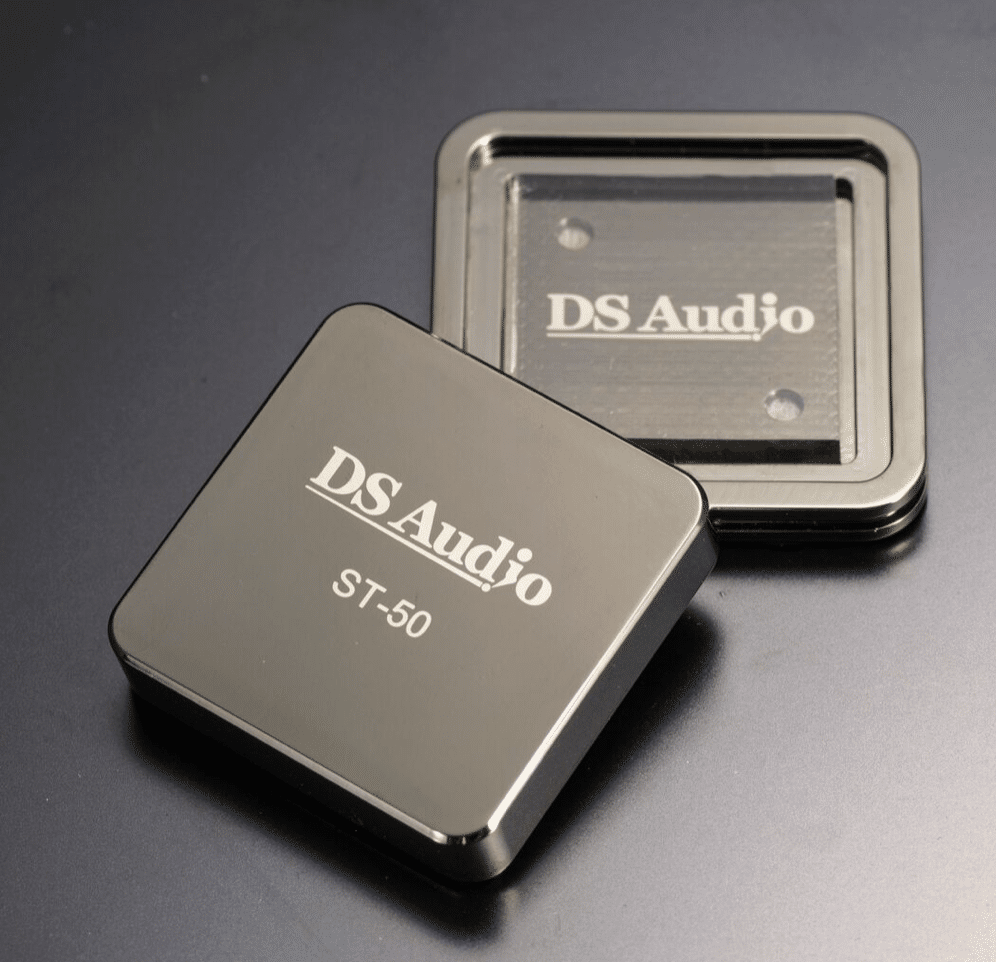
Want to clean your turntable’s stylus, effectively? So does Paul Rigby which is why he’s looking at the DS Audio ST-50
It’s a basic job. Many people do it badly. Before we talk about the ST-50, let me divert and talk about mucky stylus tips.
Keeping your stylus clean is the most important task in any turntable-based hi-fi chain. It doesn’t matter if your hi-fi costs £1,000 or £1,000,000, if the stylus is dirty that hi-fi chain will sound like a system costing somewhere in the region of £7.50, give or take.
As a stylus moves through the grooves of your vinyl, any resident muck in the groove can cake the stylus with fluff and sticky gunge. The resultant sound will quickly lose detail, dynamics and clarity. Allow the situation to continue and the lead singer of your favourite group will sound like he’s just drunk three bottles of gin with a whisky chaser. Ignore the situation even more and the fluff will actually lift the stylus from the grooves, forcing it to skate, Torvill & Dean-like, across the surface of your record.
All of this inter-groove activity is also bad news for the vinyl record and the stylus tip. A dirty stylus can cause groove damage because the dirt will force the stylus to move haphazardly. Of course, the stylus is not immune, this damage can also be encountered by the stylus itself.
“So,” you wearily sigh as you peer over the rim of your coffee cup, “keep the record clean then. Problem solved.”
Not really. Problem reduced, certainly. Problem minimised, absolutely. Yet the issue is still there for a number of reasons.
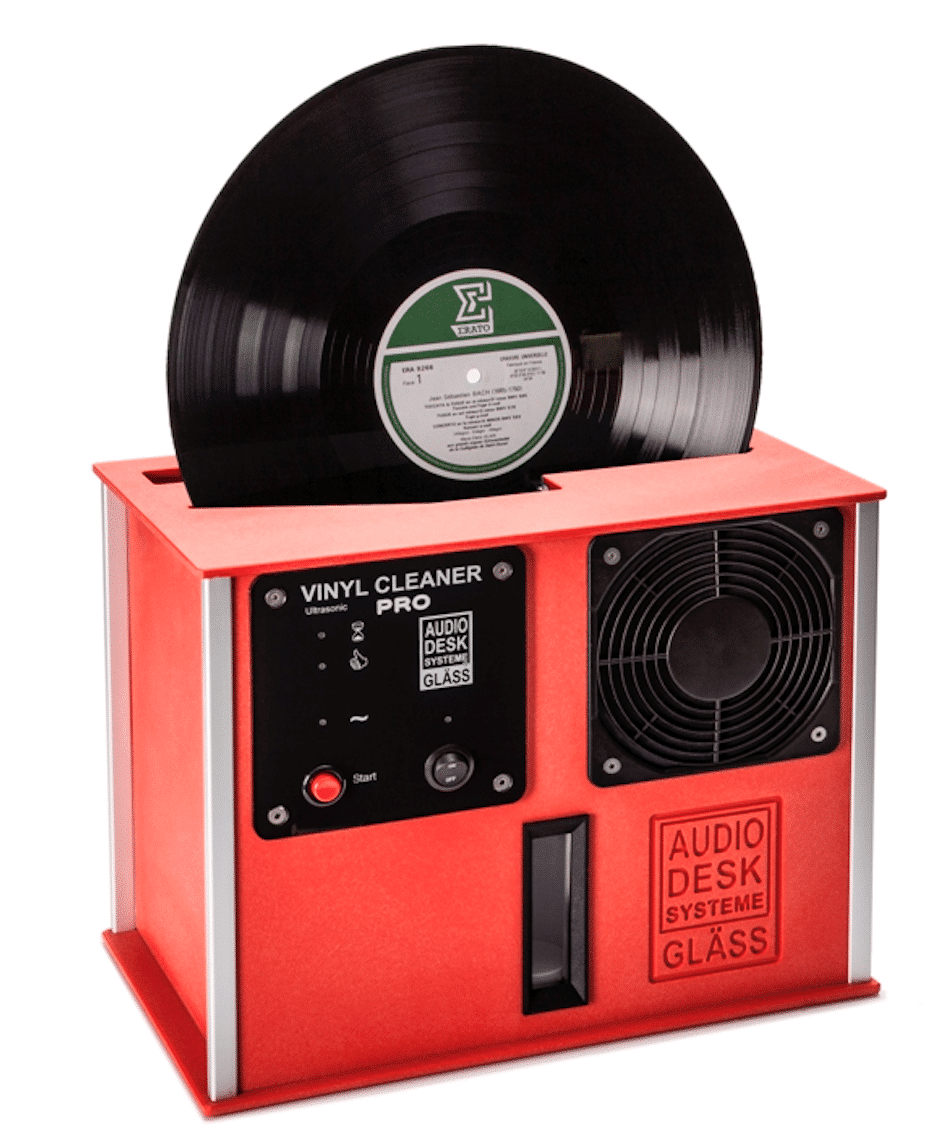
I clean my records with a very expensive ultrasonic vinyl cleaner from Audiodesk. Yet, even I have to use a stylus cleaner. Why? My room is pretty dust free yet there will still be a gradual and slow build up in the vinyl grooves from airborne dust and other particles. Sooner or later, that build up will hit the stylus because I often forget (or can’t be bothered) to take a note of when I last cleaned any one particular vinyl record. I also forget which record I’ve cleaned.
You might have noticed that I used an Emmylou Harris LP as a reference album on a bunch of reviews of late. When I first took that off the shelves I said to myself (I talk to myself a lot, incidentally), “Hmmph?” (translation: “Has this vinyl been cleaned?”) with the reply, “Nmmhm.” (translation: “Haven’t got time to find out, so let’s run with it”)
It hadn’t. What accumulated on my stylus wasn’t fluff, though, it was a weird sticky stuff. So, Ms Harris’ voice soon began to falter and distort but, at first glance, the stylus looked fine. Closer inspection revealed a knobbly gooey mess. After I cleaned the stylus, her dulcet tones returned. So, if your vinyl’s sound quality falters in the future and you see no fluffy build up on your stylus, don’t assume that the stylus is absolutely clean. Sticky residue might be the issue and the stylus might need a clean.
Cleaning the stylus can be done in many ways. There’s a host of ideas on the Internet, for example. Some of them are very scary indeed and include sandpaper but let’s not go there.
Despite the proliferation of suggestions the most popular methods can, I reckon, be reduced to two principle methods. Firstly, to use a short-haired brush to gently scrub the stylus (from rear to front) with or without liquid.
I used to use this system but I dropped it as my main, day to day, tool. Firstly because a dry brush was not very effective while the regular brushing motion increased the risk of accidental damage and it places stress on the stylus tip. Secondly, some accompanying liquids were alcohol based which could possibly rise into the cartridge body via capillary action to rust out the delicate innards. Thirdly, some cartridges can suffer as bonding material can be dissolved. I’ve actually read statements from cartridge outfits as diverse as Ortofon and Soundsmith that expressly advise against the use of liquid-based cleaning.
For regular stylus cleaning, I use a sticky pad. They are normally presented to you in a small handy container.
The idea of these gizmos is to place the exposed pad on the stationary turntable platter and then gently and carefully, while holding onto the tonearm’s finger lift, dip the stylus onto and hopefully into the pad (just a tiny bit). When the stylus is lifted from the pad, the muck remains on the pad and off the stylus. Repeat that two to three times in different parts of the pad to prevent recontamination and you’re sorted.
I’ve used several of these things over the years. The are plenty of design variants between them all but the main difference, apart from price, is the stickiness of each material and the amount of ‘give’ each one offers.
This is important. Firstly, if a pad is too sticky then it threatens to pull the dirt off the stylus but also the stylus off the cantilever. Not sticky enough and it won’t clean properly. If there’s not enough ‘give’ then it will only clean part of the stylus. Too much give and the cantilever will also sink into the pad, causing possible cantilever damage.
We’re talking fine lines here.
DESIGN
To give you a sense of what the ST-50 is all about, I’m going to bring in a value-based competitor from Vinyl Passion. It’s called the Dust Buster, it’s priced at a few pennies short of £21 and is readily available from Amazon.
The Dust Buster does the job described above. As does the DS Audio ST-50. Yet there’s a £55 difference or thereabouts in price. Why is that? Is the Dust Buster poor at cleaning your stylus? Not at all. I’ve been using it for years and highly recommend it. For the price, it offers tremendous service.
So why would you even consider spending around £55 more for a ST-50? You’ve gotta be crazy to even consider that, yes?
Well, there’s more to it than mere mental health, my friends.
The first consideration is important but rarely discussed or even admitted to. Aesthetics. Many of us like and prefer to spend money on beautiful things: cars, clothes, hand bags, books, furniture…you name it. The Dust Buster is not beautiful. It’s practical. The packaging has recently changed to a plastic container but my original arrives in a prosaic tin can that looks like a lady’s make-up accessory. It’s not pretty.
The DS Audio ST-50 arrives in an elegant little metal container, aluminium with nickel plating, that feels very expensive. Which is good…because it is, of course. But the point is this, it looks lovely, it feels lovely and it is lovely.
The ST-50 attends to details and, let’s not forget, that’s where the devil lives.
The base of the Dust Buster is shiny and metallic (or smooth and plastic-like in the new version). Although the chances are slim it is just possible that the container could possibly slip on certain types of platter, where the chassis will sit during use. The ST-50 has a tiny piece of non-slip leather attached underneath. A tiny detail but important.
My Dust Buster has a screw-top lid. The ST-50’s lid fits snugly to the base but the lid is not securely attached in any way. There’s no click-shut or screw thread here. This is a good thing because I often find that I want to clean my stylus now and not faff around unscrewing things before hand. I tend to have hold of the tonearm, looking closely at the stylus, when I realise that a stylus has to be cleaned so the design of the ST-50 allows me to use it one handed.
The alternative is to return the tonearm to its cradle, stand back, pick up the Dust Buster, unscrew the thing with two hands, store the lid, then place the Dust Buster on the platter for cleaning and then reach for the tonearm once more. The extra steps are not the end of the world, I know, and only take a few extra seconds but simplifying the use of the pad using the ST-50’s method feels much easier and natural. And when you’re in the thick out it and you just want to listen to your music, those extra few seconds product ‘Grrr’ moments. What I’m getting at is that there’s thought behind the ST-50 cleaning tool. It’s like a sculptured handle on a chisel, I suppose or even a wheelbarrow with an inflated (instead of solid) tyre. The little extras make all the difference and make the job ever so slightly easier.
Also, picking up the ST-50, you don’t hold the loosely applied lid at all, so the chassis won’t drop from your fingers. When you pick up the chassis, your fingers connect with the ST-50’s lower base which is wider than the lid.
The Dust Buster also uses a sticky pad rammed into an outer container. The lip of the pad is adjacent to and on the same level as the outer chassis. This brings up an issue. There is possibility – again slim but the threat exists – that you could possibly knock the stylus against its outer rim as you’re moving the stylus to and from the sticky pad causing potential stylus damage.
The ST-50 is different. I like the raised aspect of the pad, created from Urethane Resin. That is, the pad is elevated above the surrounding chassis. The rimless area around it prevents accidental stylus knocks.
When cleaning the ST-50, you peel the entire pad from the background chassis, clean it under a tap of warm running water and leave it to dry. Because the edge of the ST-50’s pad is thick and flat and sticky, I stand the pad on its end and let it air dry for 30 minutes. Then you reapply the pad to the chassis and you’re off again. It was at this point that I noticed that the pad itself has a DS Audio watermark running through it – very chic.
All in all, the ST-50 offers a simple and effective design and is the best I’ve seen, in its class. The above list is part of the reason for that extra £55. Here’s another reason.
SOUND QUALITY
Of course, I can’t tell you about the sound quality of the ST-50 itself because it doesn’t have one but I can tell you how it affected the stylus. Before I do that, please check out the video below. You’ll see more about the materials used in the ST-50’s construction, the pad in action and, even better, a close-up view of a stylus being cleaned by the ST-50.
In use, I looked at how the stylus sat in the pad. The Dust Buster’s sticky pad, because it is stuffed into a tight container, has a tendency to dip in the middle and then lift towards the edges. This effect is increasingly accentuated with use and I’ve been using my Dust Buster for quite a while now. It is akin to how water, because of surface tension, angles up to the rim of a glass. The Dust Buster’s pad looks very much like it.
The issue, during cleaning, is that the stylus enters into the Dust Buster’s sticky pad but, because the pad it not lying flat, the pad sits at an angle to the stylus. Thus, you can see that not all of the stylus is being cleaned, some of it remains exposed because of the pad’s angle of rest.
The ST-50 has no outer chassis acting upon it. There is no contact or pressure on the DS Audio’s sticky pad. There is no distortion or force acting upon it. This means that the pad sits isolated and is completely and totally flat.
According to my simple observations using close up lenses and computer software, the ST-50 appeared to allow the stylus to sit further into the pad than the competition, thus cleaning more of the stylus itself and, thus, being more efficient. You’re talking a tiny, tiny fraction but then the stylus is such a tiny, tiny object. The stylus, in the ST-50 also appeared to sit flatter. More top-down than at an angle which, again, allows a more even clean. Again, the angle is so, so small but then again, that might be important during play.
I returned to my Emmylou Harris LP and let the stylus run across the surface for 20 minutes. Sure enough, it picked up enough sticky mucky stuff to clog the stylus. This material was harder to shift than basic fluff because it was more securely fixed into position and blowing at the stylus only removed a small portion of it. After three dips into the ST-50’s pad, the stylus was clear and sounding as fresh as a daisy. Dynamic reach was fully restored, clarity was abundant and focus was pin sharp.
I then played a different LP, a mucky old Yes album which caked the stylus. I dipped the stylus into a Dust Buster cleaning pad three times to apparently remove all of the visible dirt. I then immediately dipped the stylus into the ST-50 and found a tiny, tiny dot visible on the ST-50’s pad. I can only surmise that this was dirt came from the upper area of the stylus which was covered by the ST-50 as the stylus tip sank slightly deeper and more evenly into its pad.
CONCLUSION
So, am I saying that the Dust Buster is poor and the ST-50 is great? Not at all. I heartily recommend the Dust Buster. For the price, it does a superb job and many people will be happy with it and will not need to move further than that.
There are other hi-fi enthusiasts, though who want the very best and are prepared to pay for the very best. And I would say that the DS Audio ST-50 is the very best stylus cleaner currently on the market. Firstly, the design is thoughtful, logical and brilliantly simple. Secondly, it cleans your stylus and cleans it perfectly. It also appears to clean more of it. Finally, it is the most elegant stylus cleaner I’ve ever seen. With a list like that, it deserves a high recommendation.
DS AUDIO ST-50 STYLUS CLEANER
Price: £75
Tel: 0118 981 4238
Website: www.ds-audio-w.biz or email at [email protected]
GOOD: chassis design, easy to use, cleaning action, easy to clean
BAD: nothing
RATING: 9
[Don’t forget to check out my Facebook Group, The Audiophile Man: Hi-Fi & Music here: www.facebook.com/groups/theaudiophileman for exclusive postings, exclusive editorial and more!]
REFERENCE
Origin Live Sovereign turntable
Origin Live Enterprise 12″ arm
Van Den Hul Crimson XGW Stradivarius Cartridge
Icon PS3 phono amplifier
Aesthetix Calypso pre-amp
Icon Audio MB845 Mk.II monoblock amplifiers
Quad ESL-57 speakers with One Thing upgrade
Tellurium Q Silver Diamond cables
Blue Horizon Professional Rack System
Harmonic Resolution Systems Noise Reduction Components
All vinyl was cleaned using an Audio Desk’s Ultrasonic Pro Vinyl Cleaner

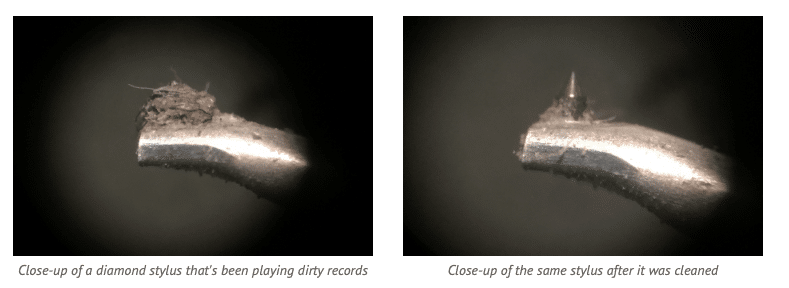
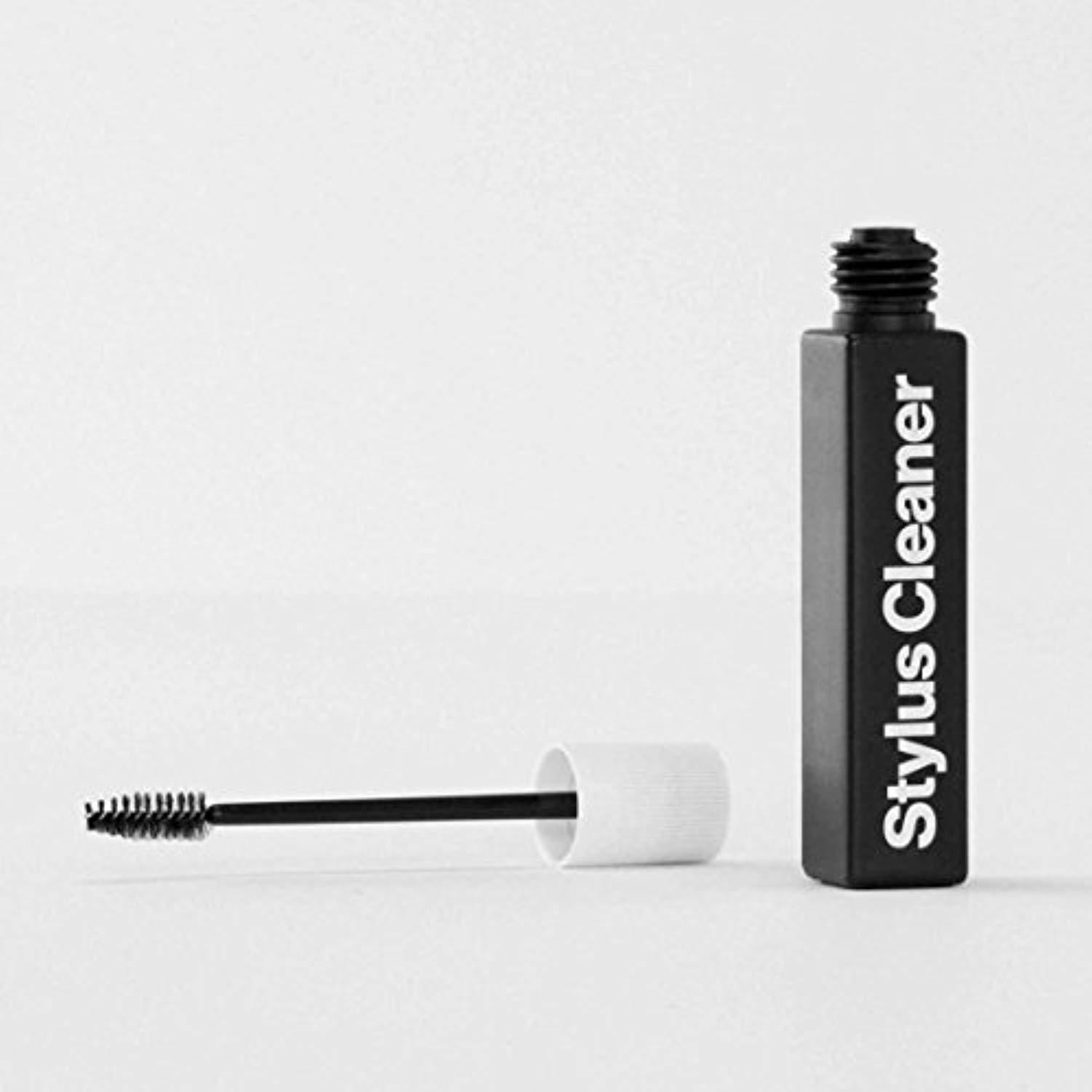
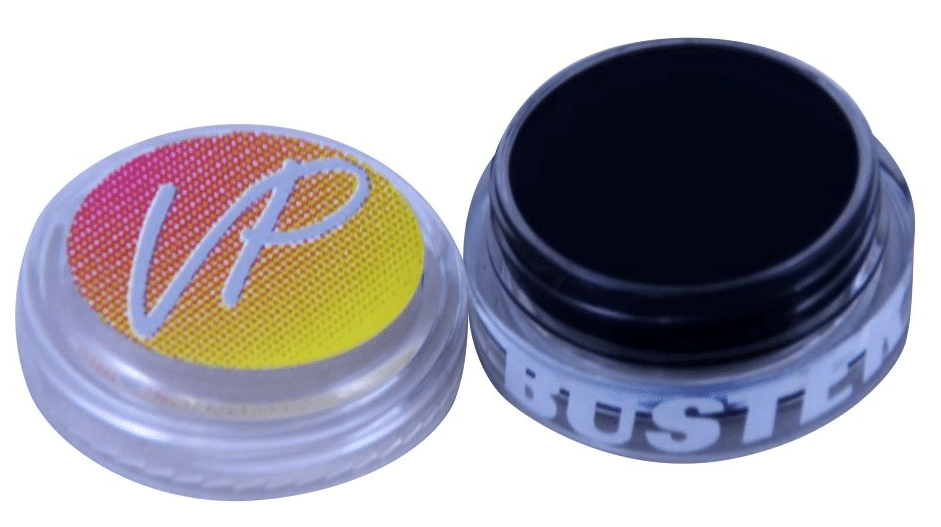
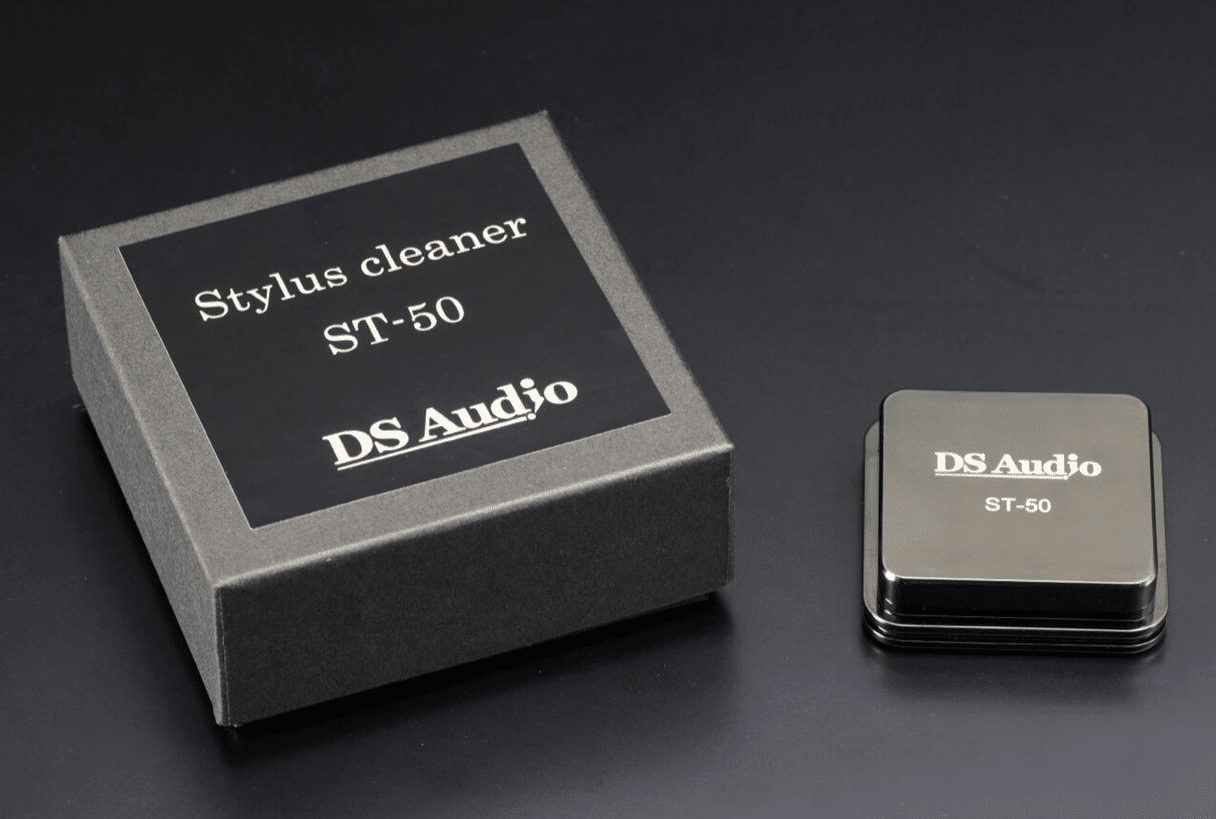
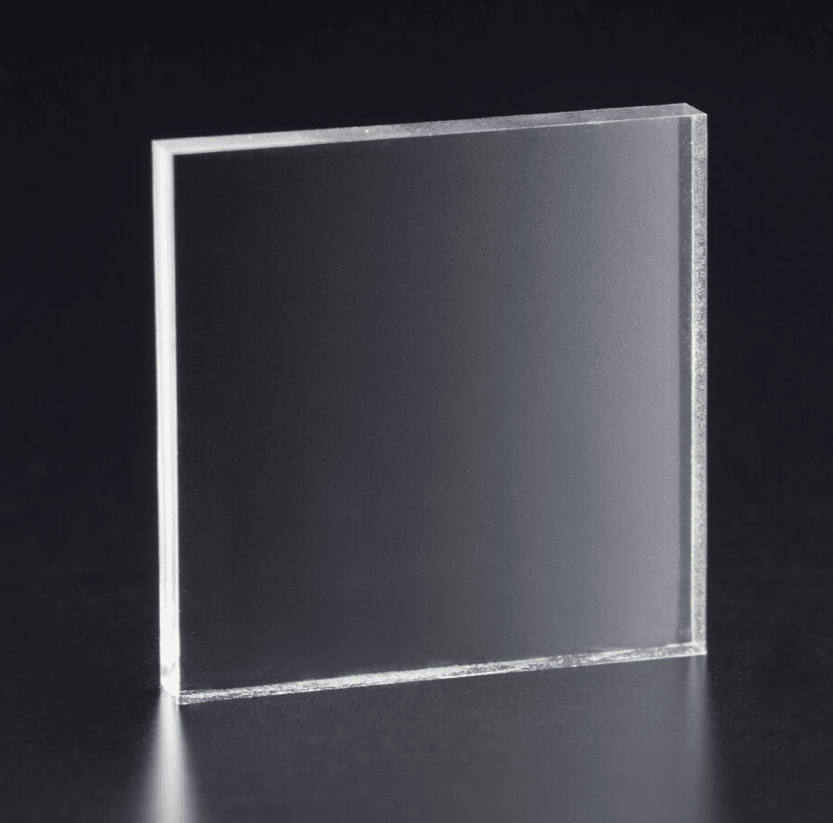
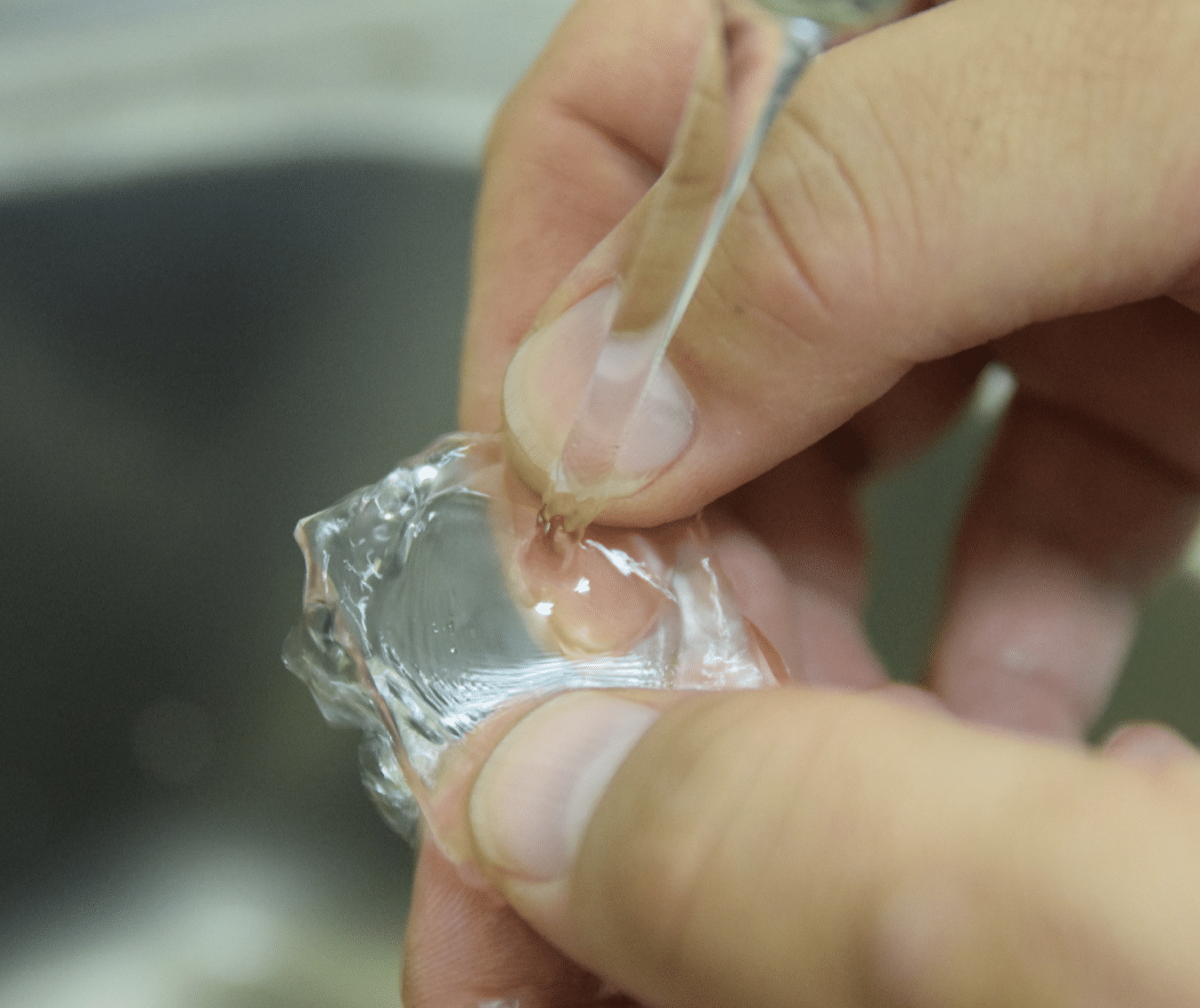
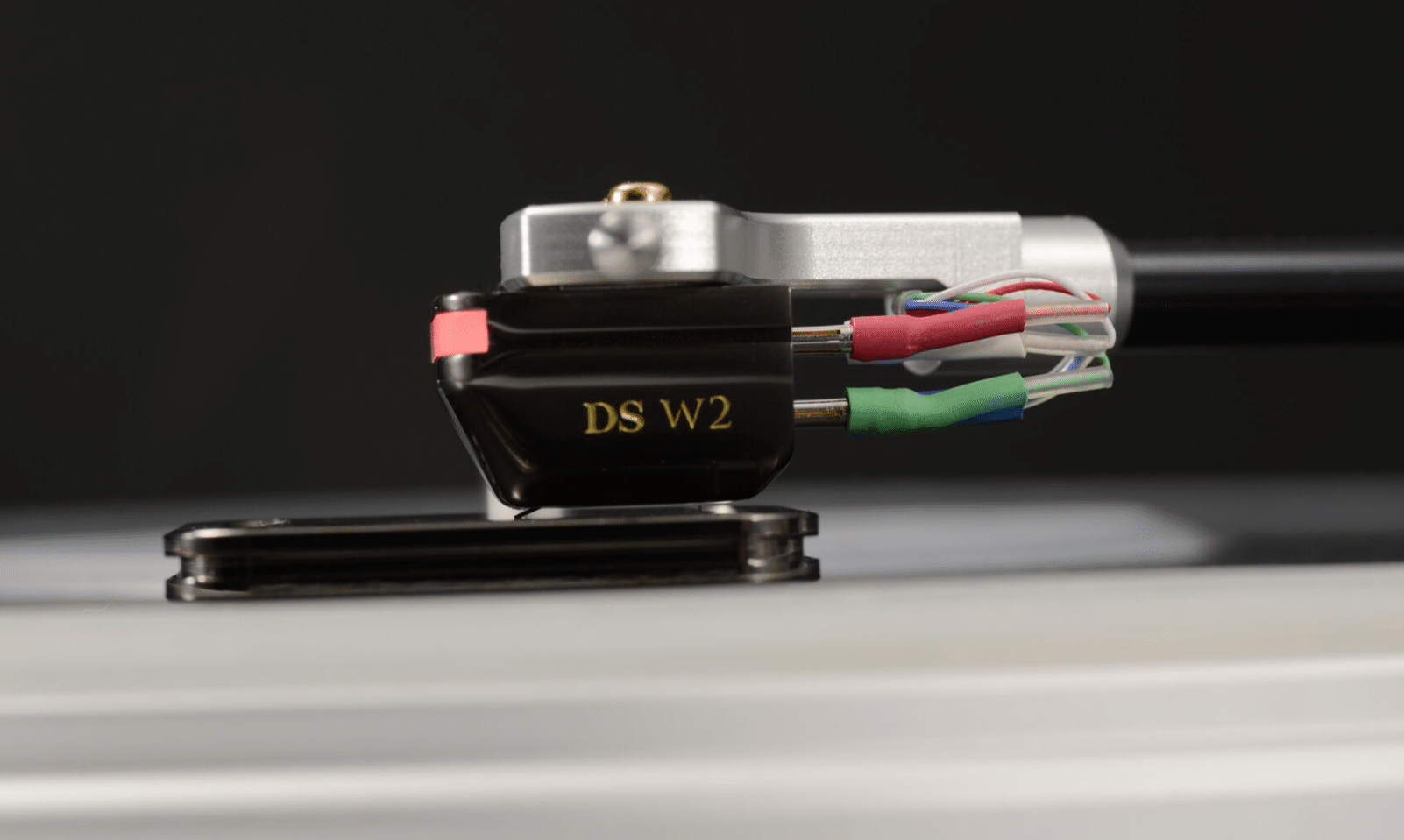
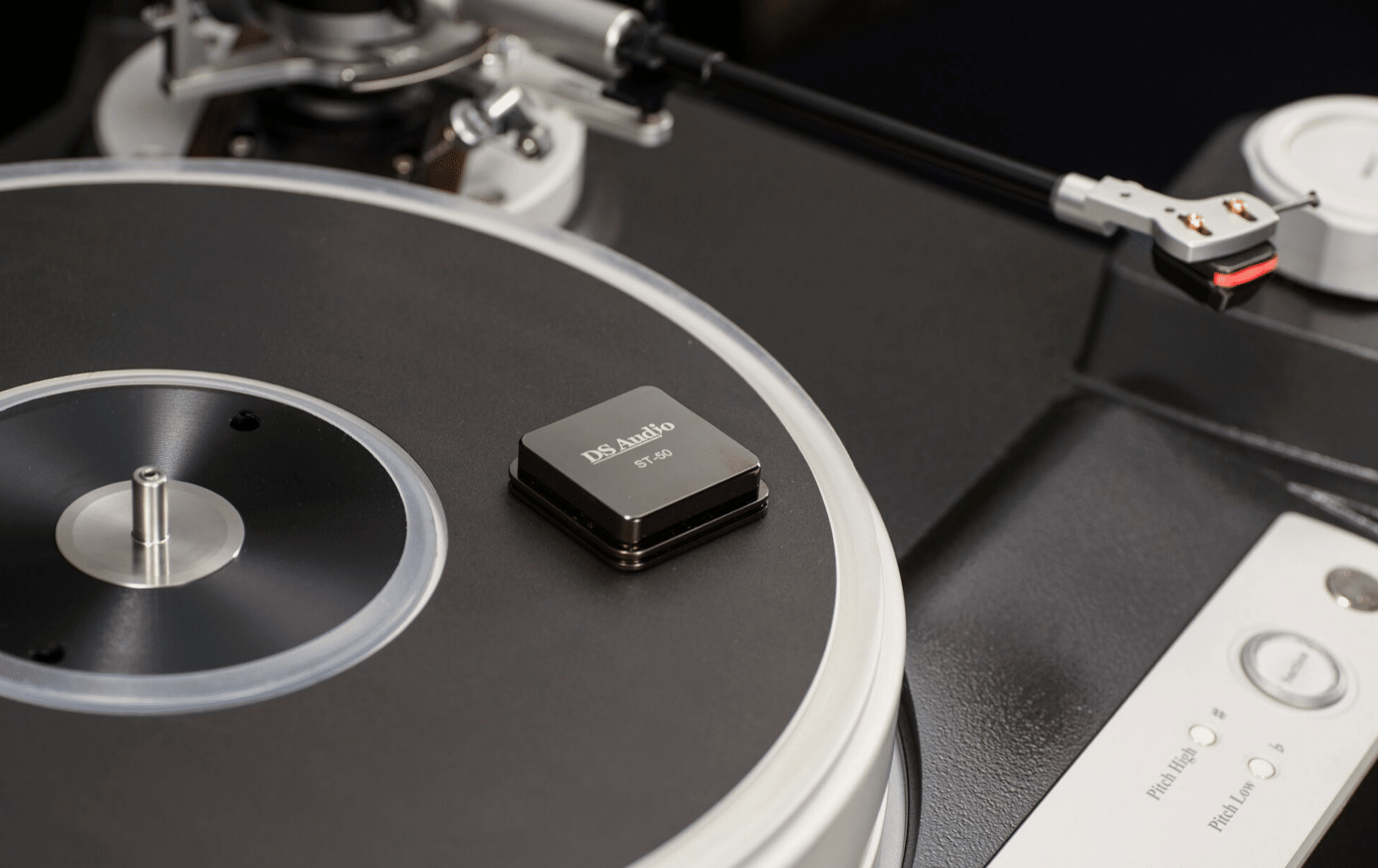
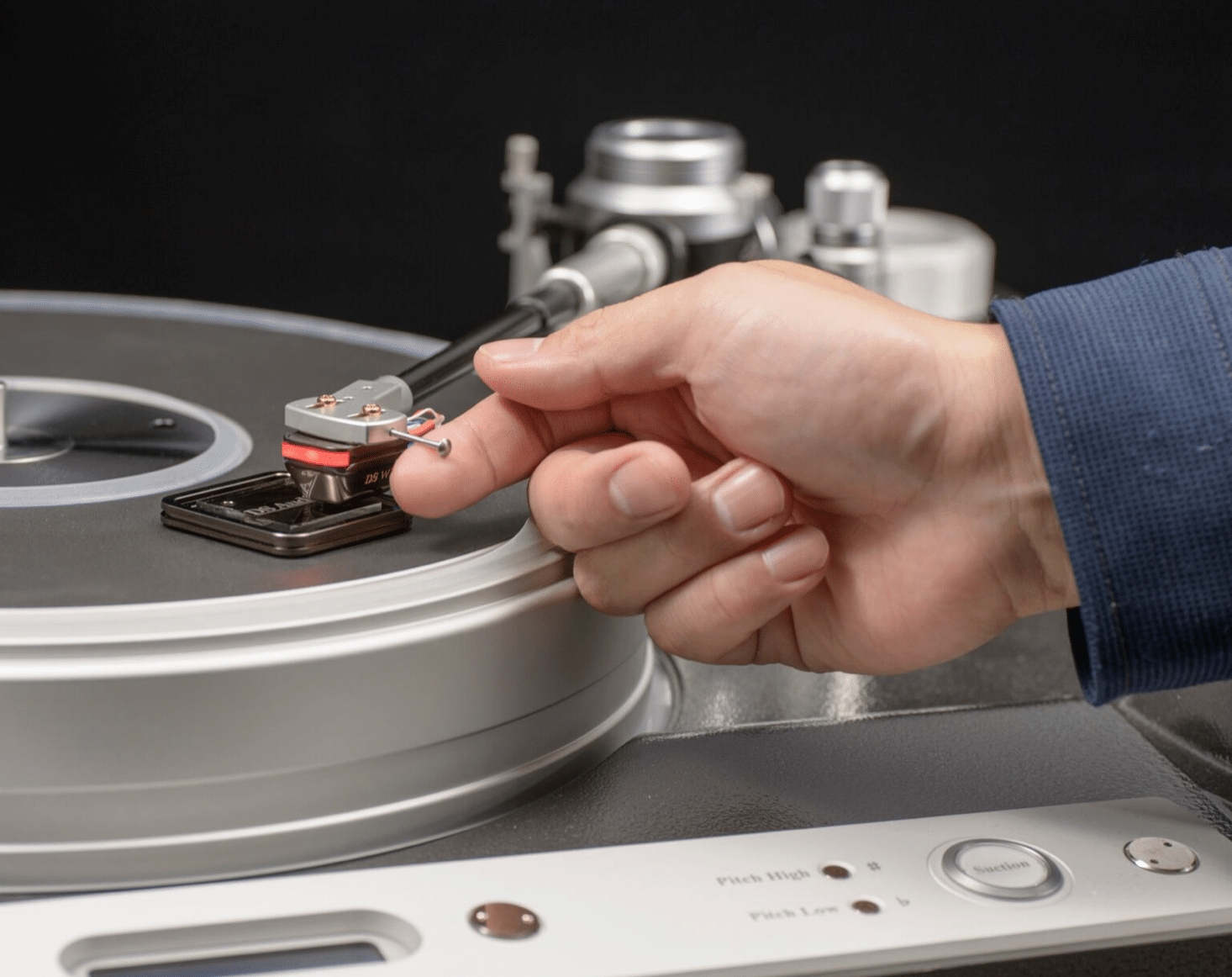



Hey Paul,
What’s your thoughts on the magic eraser option?
I used to use various brushes with liquid solvents until I came across an article about the magic eraser a few years ago. I was pretty skeptical at first, I mean as I understand it, a magic eraser is literally a block of sandpaper, albeit incredibly find sandpaper. I decided to give it a try on an old ortofon vms I had kicking around that I didn’t really care that much about, played some rather dusty records to get it gunked up (it was probably already pretty dirty), then did some A/B tests with using a standard brush vs. the eraser. I was impressed, the eraser won hands down. I don’t have anything to properly view the stylus up close, but my ears told me things were pretty clean.
I think the trick with the magic eraser is you’ve got to be careful to only gently drop/raise the needle straight up and down, no lateral movement at all. I simply use the cueing mechanism for this and lock the platter manually so it can’t move a smidge. Seems to work, would love to pick up a dustbuster one day to do a proper comparison.
Hi Barry – I’ve yet to review the Eraser but if, as you say, you have to be careful about lateral movements then I’d go with one of the non-aggressive options such as the Dust Buster, for a budget option.
Hi, how does it compare to onzow zerodust? It seems like a similar product.
Best wishes
Jonathan
The Onzow is very good indeed. I have one myself. I’d still say that the ST-50 is superior for many of the same reasons as the Dust Buster: the Onzow’s convex pad, pad material utilised, relatively awkward to use one handed, etc. There is no immediate boundary to the Onzow which is great. I recommend the Onzow but I prefer the DS Audio.
Hi Paul,
Being the designer of the Dust Buster all i can say is that you must have a very early prototype in a tin pot ..I remember sending you that 7 years ago when we were product testing … all urethane cleaners will need replacing around every 2 years due to polymer chain breakdown and as this product is made from an identical formula to the Dust Buster this will be the same. I have worked with polymers for many years i know them quite well.. none of our VP Dust Busters have a surface that is not perfectly level as suggested in your review….. your statement ” the pad sits at an angle ” is simply not true and it is not ‘squeezed’ in it is poured in as a very thin liquid urethane. I see this as yet another copy of my original design even down to the stylus tip pictures – the Dust Buster cleans just as well and possibly better and of course we have microscope pictures to prove this..
I am all for fair reviews but making up faults about a product that are simply not true whilst using that product as the sole comparison to another is un-ethical at the very least.. from you i expected better.. lastly in the video the ‘washing the pad under the tap and rubbing with fingers’ will leave skin oil traces on the pad that water will not remove so this is very poor practice…
As a writer for Long Live Vinyl you will no doubt have noticed in this coming months magazine the Dust Buster has been reviewed highly favorably.
Regards Mark B Sears.. The Missing Link & Vinyl Passion
Thanks for your comments, Mark and I’m sorry that you are upset by my review of the ST-50. That was certainly not my intention. May I also remind you that I was not reviewing the Dust Buster in this piece?
As you say, I referred to a product that was supplied to me by your good self and, I seem to recall, reviewed by myself as a finished product. As I have not received any new versions of the Dust Buster I merely referred to the reference I had in hand, used very successfully over the years and with no issues, I might add. It was only included and to be read as a reference. As an example of a value for money product and as a contrast to the DS Audio product, not as a direct A-B comparison.
I would encourage you to re-read my comments again, therefore.
Maybe if I had received an update then I would have utilised the latest model instead and commented accordingly. That I referred to it at all was, despite what you say, a compliment to you. I could have talked about the Onzow or one of several other competitors. But I did not. During the DS Audio review I also heaped praise on the Dust Buster (so I apparently share the view of the Long Live Vinyl writer then) and recommended the same. Is that unethical too?
That was a great read Paul. Thanks for taking the time out to tell us all about this wonder gadget. I’ve had my eye on it for a while and it looks the perfect solution to really clean a stylus without fluffing 😉 Like yourself I have the Dust Buster which is absolutely fine too but you do have to modify it to suit whatever set up one has. I also possess one of the great bargains of all – the Stylus putty from Northwest Analogue. Still only a fiver and it’s brilliant. But please ignore the cleaning instructions on the site lol! Go on, I dare you to read it üò± What was he thinking??????
Would I buy the ST-50? For the price I would expect it to last a lifetime. Otherwise no I wouldn’t spend the cash. Better to save it for the new Beatles White Album 4 Lp set or maybe the new half speed remasters of the first four Eno Lps. Are you going to review them too 😉
Thanks Dermot and thanks for your comments. Oddly enough, I have been talking to Universal about The Beatles. They are ruffling through their drawers, as I type this, to see if there’s a spare review copy 🙂 We will see.
Hi Dermot – re your ‘lifetime use’ concern. You might want to peruse DS Audio’s recent reply [below] on its ST-50 stylus cleaner in terms of the robustness of the featured gel material.
Sorry I’m only just seeing the reply from Mark in relation to the Dust Buster now. That was totally unfair as only for Paul’s previous reviews year after year I’d never have considered one. Ethics doesn’t come into it at all as I thought the comparison very fair. At no stage was the Dust Buster denigrated in fact it was the complete opposite. I’ll say no more except to say keep the reviews coming including the Mop Tops and the Bald One. Oh and I see Bevis Frond aka Nick Saloman has a brand new one out shortly. It may be his last. What a guy!
We do not know exactly what is used by the Dust Buster stylus cleaner, but there are different types of urethane gel materials available. Some use esters, for example, where hydrolysis occurs, reducing adsorptivity over time. However, the urethane gel used in our DS Audio ST-50 is ether-based, not ester, and hydrolysis does not occur with this solution. Therefore adsorption does not decrease in such a short period as two years as noted by Mr Sears for his Dust Buster product.
Thanks for the clarification, I appreciate your time in posting a response.
Hi Paul,
Have you had any experience of the Audio Technica AT607a cleaning fluid?
The stylus cleaner? No but I’ve really gone off the brush-cleaning stylus system after chatting with people like Ortofon, Soundsmith and more who warn against the insistent and possibly damaging pressure applied by brush cleaning. I much prefer a sticky pad-type accessory.
Paul, just read this piece and want to thank you for the tidbit about lowering the stylus onto the cleaning pad 2 or 3 times in different landing zones, as opposed to a one-off. I use an Onzow and don’t recall them mentioning that in their instructions. I’ll have to review the instructions again more closely. Also, I don’t recall Onzow mentioning anything about a shelf-life for their cleaning pad. Lowering & lifting the stylus onto the pad compels me to add a word of caution. This seems, to me, much too risky. I much prefer to align the Onzow in the proper landing site and use the cueing lever of my TT. Provided the cueing mechanism of your tonearm is good (i.e. slow, gentle, accurate) and you accurately align your cleaning pad, this seems, to me, to be a much safer practice.
Hi Paul,
Just returning to this because recently after using my “dust buster” there are fine hairs still visible on the tip. Is it time to move to the DS Audio ST50 ?
I‚Äôve had the VP dust buster for about 4 years but I wouldn‚Äôt regard it as old. Despite several attempts with the dust buster a ‚Äúshoe‚Äù of fluff remained. I managed to dislodge most of the hair etc with my short Thales stylus brush just by touching the tip with it. Please note no sweeping or brushing actions were used in this process. üòÄ However some finer threads remain which are only visible using a small LED torch.
Hi Rob – I did an A-B test with the DS and the VP and found the DS to be more effective. Although the VP was still excellent for the cash, of course. The DS is my go-to at the moment. It’s my day-to-day stylus cleaner. So I’d certainly recommend it.